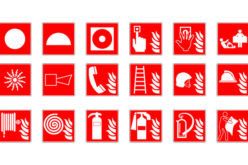Power tools transform how we approach construction, repair, and manufacturing projects. However, improper usage can lead to injury, equipment damage, and costly project delays.
Understanding common mistakes to avoid when using power tools helps business owners and managers maintain safe, productive work environments while protecting valuable equipment investments.
Ignoring Safety Protocols and Personal Protective Equipment
Many operators forgo safety gear because they see it as inconvenient or time-consuming. This choice exposes workers to serious injuries such as eye damage, hearing loss, and cuts. Wearing safety glasses, hearing protection, and suitable clothing helps prevent the most frequent power tool accidents.
Implement mandatory safety protocols for all power tool use, requiring workers to wear protective gear before operating any motorized equipment. Conduct regular safety training sessions to reinforce correct procedures, which greatly reduces workplace incidents.
Using Damaged or Dull Cutting Tools
Worn drill bits, saw blades, and cutting accessories create multiple hazards during operation. Dull tools require excessive force, increasing the likelihood of slipping or binding. Damaged accessories can break during use, sending debris flying at high speeds.
Inspect cutting tools before each use for chips, cracks, or excessive wear patterns. Replace accessories immediately when damage becomes apparent. Sharp, well-maintained tools perform better while reducing operator fatigue and safety risks.
Quick Tool Inspection Tips
- Check cutting edges for nicks or rounded surfaces
- Examine mounting hardware for secure attachment
- Test moving parts for smooth operation
- Look for cracks in tool bodies or handles
Selecting Inappropriate Tools for Specific Applications
Using power tools outside their intended parameters results in poor performance and equipment failure. A lightweight drill cannot handle heavy-duty masonry work effectively. Conversely, industrial-grade tools may provide excessive power for delicate tasks.
Carefully match tool specifications to project requirements. Consider material type, thickness, and working conditions when selecting equipment. When working with specialized applications, such as automotive repair, understanding best practices when using spot weld drill bits becomes particularly important for achieving professional results.
Neglecting Proper Maintenance Schedules
Power tools require regular maintenance to function reliably and safely. Dirt, debris, and worn components reduce performance while increasing the risk of breakdown. Motors can overheat when air vents become clogged with dust and metal particles.
Develop maintenance schedules based on usage frequency and manufacturer recommendations. Clean tools after each work session, removing sawdust and debris from moving parts. Lubricate components according to specifications and replace worn parts promptly.
Essential Maintenance Tasks
- Clean air vents and cooling fans regularly
- Check cord integrity for cuts or exposed wiring
- Tighten loose fasteners and connections
- Replace carbon brushes when recommended
Rushing Through Setup and Operation Procedures
Time pressure often causes operators to skip necessary setup steps or rush through procedures. Improper setup leads to inaccurate cuts, damaged materials, and increased accident risks. Taking shortcuts during operation compromises both quality and safety.
Allow adequate time for proper tool setup before beginning work. Secure workpieces firmly using clamps or appropriate holding devices. Double-check measurements and alignment before powering up equipment. Patient, methodical approaches produce superior results while reducing mistakes to avoid when using power tools throughout the project lifecycle.
Building a Culture of Power Tool Excellence
Avoiding these common pitfalls requires commitment from management and workers alike. Training programs, regular equipment inspections, and clear safety protocols create environments where power tools enhance productivity rather than create hazards.
Image Credentials: Photographer: Aleksandr Rybalko File #: 442229936
-------------------------------------------------------------------------------------------------------------
-------------------------------------------------------------------------------------------------------------
home remodeling reference (links to internal page)
 |
 |
 |
 |
| directory | photos | forms | guide |
Helpful article? Leave us a quick comment below.
And please share this article within your social networks.











